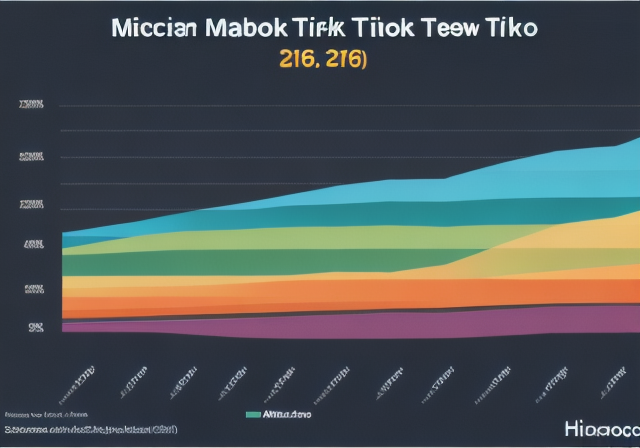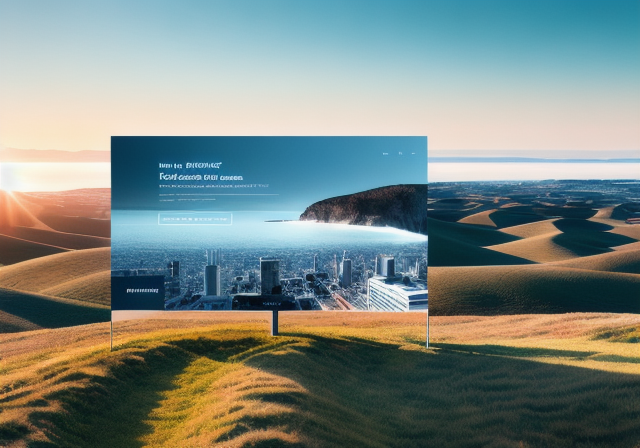What are Microsites?
Microsites are small websites that are designed to be more targeted and focused than traditional websites. These sites are typically created to promote a specific product or service, event, or marketing campaign. Microsites are meant to be simple, easy to navigate, and provide a clear call to action. They are often used in conjunction with larger websites, but can also be standalone sites.
The benefits of microsites over traditional websites:
- Microsites offer a more focused and targeted approach to marketing. By creating a website that is specifically designed for a particular product or service, businesses can more effectively reach their target audience.
- Microsites are often more cost-effective than traditional websites. Since they are smaller in scope, they require less time and resources to create and maintain.
- Microsites can be created quickly and easily. This makes them ideal for time-sensitive marketing campaigns, product launches, or events.
- Microsites can provide valuable data and insights. By tracking the activity on a microsite, businesses can gain a better understanding of their target audience and how they are interacting with their products or services.
Examples of successful microsites:
Coca-Cola’s “Share a Coke” Campaign: Coca-Cola launched a microsite as part of their “Share a Coke” campaign. The microsite allowed users to customize Coke bottles with their names and share them via social media. The campaign was a huge success and resulted in a 2% increase in sales.

Google’s “Art, Copy & Code” Campaign: Google created a microsite to showcase their “Art, Copy & Code” campaign, which aimed to show how creativity and technology can work together. The microsite featured interactive demos of different projects and provided a platform for Google to engage with their target audience.

Nike’s “Better World” Campaign: Nike launched a microsite as part of their “Better World” campaign, which focused on sustainability and environmental responsibility. The microsite showcased Nike’s commitment to sustainability and provided users with information on how they could reduce their environmental impact.

Microsites can be a powerful tool for businesses looking to promote a specific product or service, event, or marketing campaign. By creating a focused and targeted website, businesses can more effectively reach their target audience and achieve their marketing goals.
When to Use Microsites
Now that we know what microsites are and how they work, it’s time to discuss when to use them. Not every campaign requires a microsite, but some benefit greatly from it. Here are some examples:
Types of Campaigns That Benefit from Microsites
- Product launches: Microsites allow businesses to create a buzz around a new product. They can showcase the features, benefits, and use cases of the product in a visually stunning way.
- Events: Microsites are perfect for promoting events, conferences, and trade shows. They can provide all the necessary information, such as schedules, speakers, and locations, in an easy-to-navigate way.
- Contests and giveaways: Microsites can be used to promote contests and giveaways. They can host the entry forms, rules, and prizes, creating a fun and interactive experience for the users.
How to Determine If a Microsite Is the Right Choice for Your Campaign
Before jumping into creating a microsite, it’s essential to evaluate whether it’s the right choice for your campaign. Here are some questions to ask yourself:
- Does your campaign have a specific goal or message that can be communicated effectively through a microsite?
- Does your campaign require a unique design or branding that can’t be achieved through your main website?
- Do you have the resources, including time and budget, to create and maintain a microsite?
If you answered yes to these questions, then a microsite may be the right choice for your campaign. However, if you’re unsure, it’s always best to consult with a professional to ensure you’re making the right decision.
Common Mistakes to Avoid When Using Microsites
While microsites can be incredibly beneficial for campaigns, there are also some common mistakes to avoid:
- Creating a microsite for the sake of it: Just because microsites are trendy doesn’t mean you should create one for every campaign. Make sure it aligns with your goals and message.
- Not optimizing for SEO: Microsites need to be optimized for SEO, just like any other website. Make sure to include relevant keywords, meta descriptions, and alt tags.
- Not promoting it: Don’t assume people will find your microsite organically. Promote it through social media, email newsletters, and other marketing channels.
By avoiding these common mistakes and following best practices, you can ensure that your microsite is a success.

In conclusion, microsites are a powerful tool that can elevate your campaigns to the next level. By understanding when to use them, how to determine if they’re the right choice, and common mistakes to avoid, you can create a successful microsite that engages your audience and achieves your goals.
Designing an Effective Microsite
Once you’ve decided to use a microsite for your campaign, it’s important to ensure that your microsite design is engaging, visually appealing, and easy to navigate. Here are some key elements of a successful microsite design:
Choosing the Right Color Scheme, Imagery, and Typography
The color scheme, imagery, and typography of your microsite are essential elements of its design. They set the tone for your campaign and can make or break the user experience. When choosing a color scheme, consider your brand’s existing colors and how they can be incorporated into the microsite. You may also want to research color psychology to select colors that evoke the desired emotions in your audience.
Imagery is an important aspect of any website, and it’s especially important in a microsite. Use high-quality images that are relevant to your campaign and reflect your brand’s personality. Typography is also a critical component of your microsite design. Use fonts that are easy to read and align with your brand’s style.
User Experience and Navigation Best Practices
When designing your microsite, keep in mind that user experience is key. Your microsite should be easy to navigate and provide a seamless user experience. Use clear calls-to-action and ensure that they are prominently displayed. Avoid cluttering the microsite with too much information, and make sure that the content is organized in a logical and easy-to-follow manner.
Navigation is also crucial to the success of your microsite. Ensure that the navigation menu is easy to find and use, and consider using breadcrumb navigation to help users keep track of their location within the microsite. Additionally, you may want to consider implementing search functionality to help users quickly find the information they are looking for.
By following these design best practices, you can create an effective microsite that engages your audience and drives conversions.

Remember to test your microsite design on different devices and screen sizes to ensure that it looks great and functions properly on all platforms. By putting in the effort to create an effective microsite design, you can create a memorable user experience that drives results for your campaign.
Developing and Launching Your Microsite
Once you have designed your microsite, it’s time to bring it to life. Developing and launching a microsite requires careful planning and attention to detail to ensure that your site is user-friendly and meets your business needs. Below we will cover the important steps in the process of developing and launching your microsite.
Choosing the Right Platform
Choosing the right platform is crucial when it comes to developing your microsite. The platform you choose will determine how user-friendly your site is and how easy it is to manage. There are many different platforms to choose from, including WordPress, Wix, SquareSpace, and more. Each platform has its pros and cons, so it’s essential to research each one to determine which platform is right for your needs. Consider factors such as cost, ease of use, and customization options.
Working with a Development Team
Working with a development team is essential when it comes to developing your microsite. A skilled development team can help you bring your vision to life and ensure that your site is user-friendly and functional. When choosing a development team, make sure to look for a team with experience in building microsites. Consider their portfolio and testimonials from past clients to ensure that they are a good fit for your project.
It’s also essential to communicate your vision and goals clearly to your development team. Provide them with a detailed brief that outlines your expectations and requirements for the microsite. Regular check-ins and updates throughout the development process can help ensure that your site is on track and meets your business needs.
Testing and Launching Your Microsite
Before launching your microsite, it’s essential to test it thoroughly to ensure that it is fully functional and user-friendly. Test the site on different devices and platforms to ensure that it is responsive and looks good on all devices. Check all links and forms to ensure that they are working correctly.
Once you have thoroughly tested your microsite, it’s time to launch it. Make sure to promote your microsite through various channels, such as social media, email marketing, and paid advertising. Regularly monitor your site’s performance and make updates as needed to ensure that it continues to meet your business needs.
In conclusion, developing and launching a microsite requires careful planning and attention to detail. Choosing the right platform, working with a development team, and testing and launching your microsite are all crucial steps in the process. By following these steps, you can ensure that your microsite is user-friendly, functional, and meets your business needs.

A team of skilled developers can help you bring your microsite to life.
Measuring Success
Once your microsite is live, it’s time to start tracking its success. Defining and tracking key performance indicators (KPIs) is crucial to understanding how your microsite is performing and making adjustments to improve its effectiveness.
Some common KPIs for microsites include:
- Page views
- Click-through rates (CTRs)
- Conversion rates
- Time spent on site
By monitoring these metrics, you can gain valuable insights into how visitors are interacting with your microsite and identify areas for improvement.
Analyzing Data and Adjusting Your Microsite Strategy
Once you have data on your microsite’s performance, it’s important to analyze it and make adjustments to your strategy accordingly. This can involve tweaking the design and content of your microsite, adjusting your marketing approach, or even pivoting to a new target audience.
Here are some tips for analyzing your microsite’s data:
- Use A/B testing to compare different versions of your microsite and see which performs better
- Identify which pages are driving the most traffic and engagement, and focus on optimizing those pages
- Look for patterns in user behavior and adjust your microsite to better align with user needs and preferences
Tips for Maximizing the ROI of Your Microsite
Ultimately, the success of your microsite depends on its ability to generate a positive return on investment (ROI). Here are some tips for maximizing the ROI of your microsite:
- Use personalized content to create a more engaging user experience
- Include clear calls to action to encourage visitors to take action
- Make sure your microsite is optimized for search engines to increase visibility and traffic
- Integrate your microsite with your overall marketing strategy to create a cohesive brand experience for customers
By following these tips and monitoring your microsite’s performance, you can ensure that your microsite is generating a positive ROI and driving real business results.


Conclusion
Microsites are not a new concept, but they have evolved significantly over the years. Today, they are more important than ever for businesses looking to stand out in a crowded online world. As we have seen in this article, microsites have a range of benefits, from boosting engagement to increasing conversions and even improving SEO.
If you’re thinking of creating a microsite for your business, there are a few key takeaways to keep in mind. Firstly, make sure your microsite has a clear purpose and is targeted at a specific audience. This will help you create content that resonates with your audience and drives the desired actions.
Another important factor to consider is the design of your microsite. As we discussed earlier, a well-designed microsite can be the difference between success and failure. Make sure your microsite is visually appealing, easy to navigate, and optimized for mobile devices.
Finally, don’t forget to track your microsite’s performance and adjust your strategy accordingly. By analyzing key performance indicators (KPIs) such as traffic, engagement, and conversions, you can identify areas for improvement and maximize the ROI of your microsite.
The Future of Microsites
As technology continues to evolve, we can expect to see even more exciting developments in the world of microsites. One trend that is already emerging is the use of augmented reality (AR) and virtual reality (VR) in microsites. These technologies allow businesses to create immersive experiences that engage customers in new and exciting ways.
Another trend to watch out for is the use of artificial intelligence (AI) in microsites. AI-powered microsites can personalize the user experience, making it more relevant and engaging for each individual user.
Final Thoughts
Microsites are a powerful tool for businesses looking to drive engagement, increase conversions, and improve their online presence. By creating a well-designed microsite that is targeted at a specific audience, you can create a more personalized and engaging experience for your customers.
Remember to track your microsite’s performance and adjust your strategy accordingly. Keep an eye on emerging trends in the world of microsites, such as AR, VR, and AI, and be ready to embrace new technologies as they emerge.
With the right approach, a microsite can be a game-changer for your business. So why not give it a try today?


“Don’t be afraid to get creative and experiment with new ideas. A well-executed microsite can be the key to unlocking your business’s full potential.”
-The Sales Maverick







